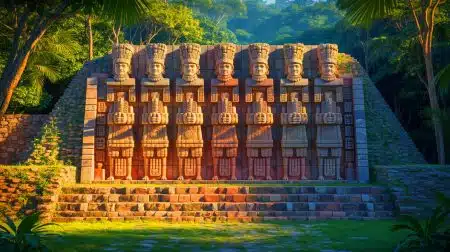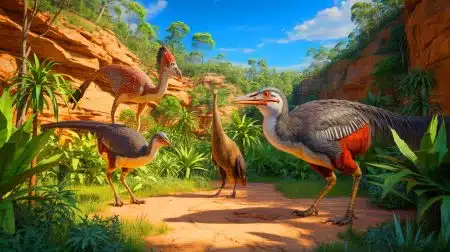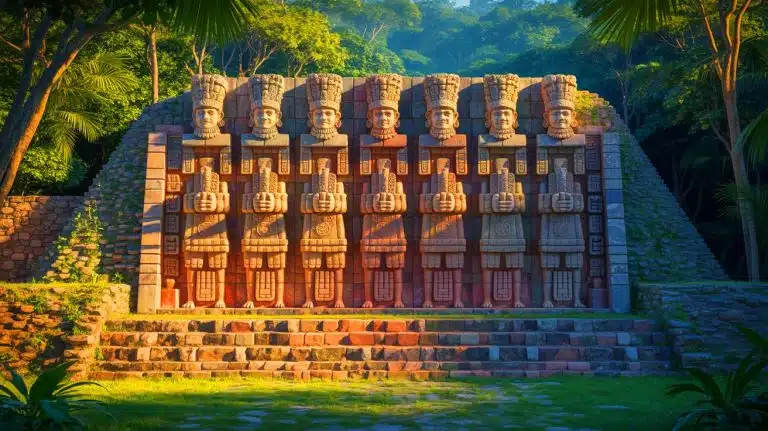| IN A NUTSHELL |
|
In the heart of Copán, Honduras, lies Altar Q, a monument that has captivated researchers for centuries. Recently, the monument has become the focus of a groundbreaking study by Rich Sandoval, a linguistic anthropologist at Metropolitan State University of Denver. Sandoval claims that the 1,300-year-old altar, renowned for its elaborate carvings of Mayan rulers, may hold a hidden language within its artwork. His research suggests that the hand poses of these rulers are not mere artistic flourishes but a form of sign language encoding sacred calendar dates. If validated, this discovery could revolutionize our understanding of Mayan history and script.
The Hidden Language of Hand Signs
Sandoval’s research introduces a novel perspective on the Altar Q, proposing that the hand gestures depicted are intentional signs with specific meanings. “Almost anywhere you see hieroglyphs, you see a figure, oftentimes in the middle, at least one, sometimes multiple, holding very unique hand forms,” Sandoval explained. He has identified these as hand signs, complementing the hieroglyphs rather than translating them directly.
For decades, researchers have understood the Mayans to possess a complex writing system of over 1,000 hieroglyphs, many of which remain undeciphered. Sandoval’s comparison of Altar Q to the Rosetta Stone underscores the potential of this dual-script system. The 16 rulers depicted on the altar display deliberate hand gestures, varying in orientation and form. According to Sandoval’s study, these gestures may represent numbers, including a hieroglyph for zero, and follow patterns similar to Long Count period endings.
Decoding Ancient Timekeeping
The Long Count calendar is a cornerstone of Mayan timekeeping, marking the passage of time since a mythic creation date in 3114 BCE. Sandoval argues that Altar Q's four sides encode Long Count dates significant to dynastic events, which were previously omitted in hieroglyphic inscriptions.
By dividing the 16 hand signs into groups corresponding to each side of the altar, Sandoval identified four specific Long Count dates within the ninth b’ak’tun. This period, spanning approximately 394 years, aligns with key historical events. While the hieroglyphs on Altar Q lack direct Long Count notations, Sandoval suggests that the hand signs fill this gap, offering a more complete historical narrative.
Historians have urged caution, calling for additional research to validate these claims. However, the possibility of a sign language script opens new avenues for understanding Mayan art and civilization, showcasing their sophistication in recording history.
Implications for Mayan Studies
Altar Q has long symbolized dynastic power, linking rulers to their ancestors and cosmic cycles. Sandoval's findings suggest that the monument may also serve as a timekeeping device, embedding a "sign language" of numbers within the rulers' poses. This revelation highlights the potential for undiscovered aspects of Mayan writing to emerge from existing artifacts.
The study, published in the journal "Transactions of the Philological Society," invites scholars to reconsider the complexity of Mayan scripts and the role of sign language in their culture. Recognizing the dual-script system may enhance our understanding of Mayan history, revealing a civilization even more advanced than previously thought.
Looking Ahead: A New Frontier in Research
Sandoval's research on Altar Q challenges established notions of Mayan communication and documentation. If further studies confirm his findings, the implications for Mayan studies are profound. Scholars may need to reassess artifacts across the Mayan world, searching for similar dual-script systems.
As researchers continue to explore this new frontier, questions remain about the extent and purpose of hand signs in Mayan art. Could other monuments hold similar secrets? How might this discovery alter our understanding of Mayan history? The answers may lie in the careful examination of art and inscriptions that have been hiding in plain sight.
As we delve deeper into the mysteries of the Maya, one question lingers: What other secrets does this ancient civilization hold, waiting to be uncovered by modern scholars?
Did you like it? 4.5/5 (20)






Wow, this could change everything we know about the Mayans! 😮
This is mind-blowing! How soon can we expect more research to validate these findings? 🤯